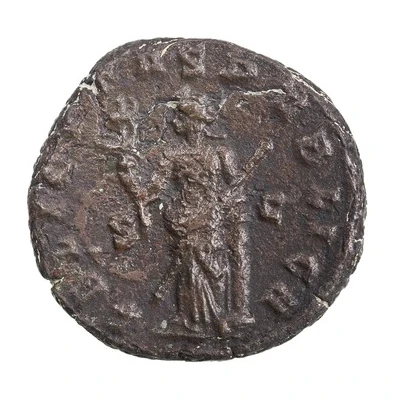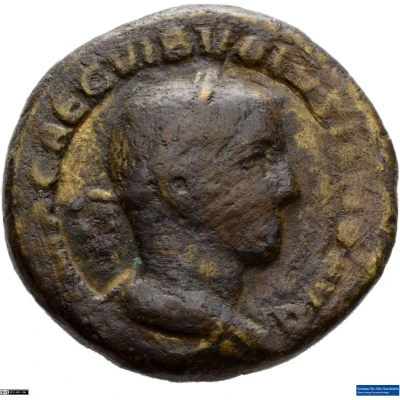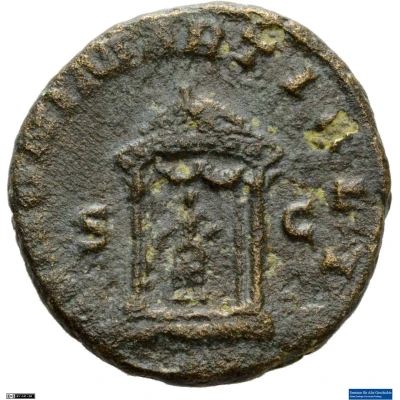


© American Numismatic Society (ANS)
As - Volusianus FELICITAS PVBLICA S C; Felicitas
| Bronze | 10.4 g | 23.5 mm |
| Issuer | Rome › Roman Empire (27 BC - 395 AD) |
|---|---|
| Emperor | Volusianus (Gaius Vibius Volusianus) (251-253) Trebonianus Gallus (Gaius Vibius Afinius Trebonianus Gallus) (251-253) |
| Type | Standard circulation coin |
| Years | 251-253 |
| Value | As (1⁄32) |
| Currency | Antoninianus, Reform of Caracalla (AD 215 – 301) |
| Composition | Bronze |
| Weight | 10.4 g |
| Diameter | 23.5 mm |
| Shape | Round (irregular) |
| Technique | Hammered |
| Orientation | Variable alignment ↺ |
| Demonetized | Yes |
| Updated | 2024-10-05 |
| Numista | N#284142 |
|---|---|
| Rarity index | 100% |
Reverse
Felicitas, draped, standing left, leaning on column, holding caduceus in right hand and transverse sceptre in left hand.
Script: Latin
Lettering: FELICITAS PVBLICA S C
Translation:
Felicitas Publica. Senatus Consultum.
Good fortune of the public. Decree of the senate.
Comment
Mass varies: 8.91–11.35 g;Diameter varies: 22.95–23.84 mm;
Example of this type:
American Numismatic Society (ANS)
Source:
Online Coins of the Roman Empire (OCRE)
Interesting fact
One interesting fact about the coin is that it features the image of Felicitas, the Roman goddess of good luck and prosperity, on one side, while the other side bears the inscription "FELICITAS PVBLICA S C," which translates to "Public Good Fortune." This coin was minted during the reign of Emperor Volusianus, who ruled the Roman Empire from 251 to 253 AD. The use of bronze in the coin's construction was a common practice during this time period, as it was a readily available and affordable metal. Despite its small size and relatively low value, this coin is a significant artifact that provides insight into the economic and cultural practices of ancient Rome.



